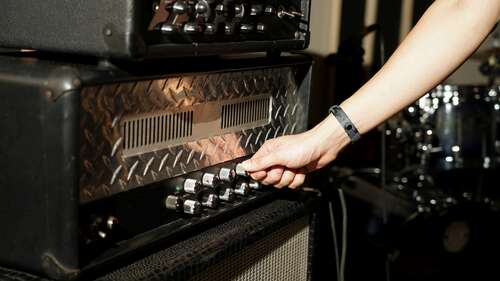
As mentioned, the most significant perk of tube amps is their enveloping warmth that adds a unique richness to the sound of your guitar. It also makes the signals sound broader as if they’re coming through a concert hall. Another distinctive characteristic of tube amps is their natural distortion. Cranking up the gain and putting those valves to work can give a new life to your guitar sound, suitable for overdriven rock riffs.
Setting the volume on a tube amp’s sweet spot between clean and overdriven allows guitarists to control the level of distortion manually through their playing style. Playing softer leads to quieter and cleaner sounds, whereas playing more firmly puts more emphasis on the notes by being louder and adding new harmonics to the sound. Many blues players use this feature of tube amps to create interesting dynamics during solo sections.
In contrast, the transistors in solid-state amps have more precision and are more responsive. The clean results from a solid-state guitar amp allow for audio procession more freely. Whether you want to use analog pedals or digital gear to add sound effects, solid-state amps allow you to build your sound without any pre-procession coming from the amp itself. Some guitarists appreciate this freedom, whereas some believe such audio manipulations can never replace the natural effects and dynamics coming from a tube amp.
Moreover, the accuracy of transistors allows for more direct and linear audio imaging. If a tube amp’s richness creates a broad concert hall effect, the precision from solid-state amplifiers makes the output sound like it’s coming from an acoustically treated studio room. Besides clean and jazzy sounds, this feature also servers aggressively distorted guitar sounds in modern metal genres.

